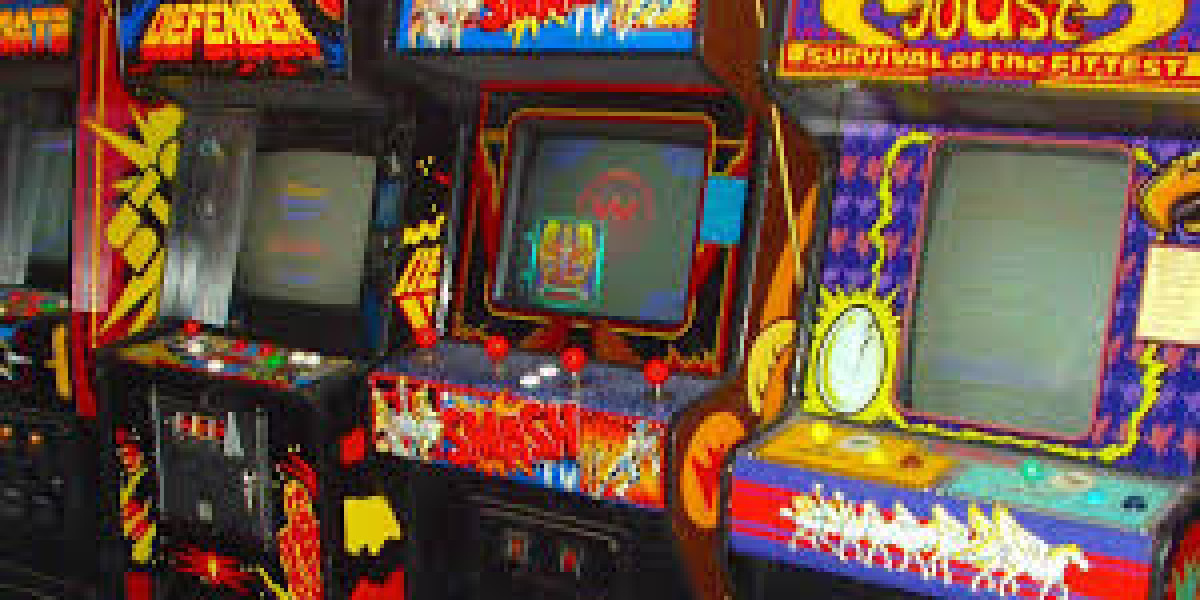INTRODUCTION
In the ever-evolving world of digital entertainment, one phenomenon continues to captivate generations — the arcade game. From the buzzing neon-lit halls of the 1980s to mobile emulators and retro gaming consoles of today, arcade games have never truly gone out of style. These compact machines, loaded with vibrant graphics and addictive gameplay, sparked a cultural movement and helped lay the foundation for the multibillion-dollar video game industry.
Origins of the Arcade Game Phenomenon
The story of the arcade game began in the early 1970s when Pong, developed by Atari, burst onto the scene. A simple table tennis simulation, Pong became an instant success and ignited public interest in interactive electronic entertainment. Its success led to the birth of the arcade game industry, with developers around the world racing to create the next big hit.
Games like Space Invaders, Donkey Kong, and Pac-Man soon followed, cementing arcade machines as must-have installations in shopping malls, movie theaters, and diners. For the first time, players could step into a digital world for a coin or two and test their reflexes, strategy, and skill against the machine or a high-score leaderboard.
The Social Element of Arcade Gaming
Arcade games weren’t just about solo fun. They became powerful social tools. Friends would gather around a machine to watch, cheer, or compete in turn-based battles. Multiplayer games like Street Fighter II and NBA Jam added a new layer of interaction, allowing for head-to-head matchups that often drew crowds in arcade halls.
The social setting of arcades fostered community — a physical space where fans of video games could meet, compete, and share tips. In many ways, the arcade was the forerunner to today’s esports arenas and online gaming communities.
Evolution and Innovation in Game Design
The beauty of the arcade game lies in its simplicity paired with increasingly challenging gameplay. Early games were designed to be easy to learn but difficult to master, encouraging players to try “just one more time.” This philosophy became a staple of arcade design, encouraging repeat plays and higher earnings for arcade owners.
Innovations continued throughout the 80s and 90s, with advancements in hardware allowing for more complex visuals and audio. The arcade experience was extended beyond joysticks and buttons with the advent of driving simulations, light gun games, and rhythm-based titles like Dance Dance Revolution.These new formats brought in wider audiences, including younger children and families.
See more related article new york style pizza near me
The Decline and Rebirth of Arcades
Despite its massive success, the popularity of the traditional arcade game began to wane in the late 1990s. The rise of home consoles like the PlayStation and Nintendo 64 allowed gamers to enjoy similar experiences without leaving their homes. Online gaming, digital downloads, and powerful smartphones further pushed arcades into the background.
However, arcade games never truly disappeared. In recent years, there has been a resurgence in interest, driven by nostalgia and a craving for tactile, social gaming experiences. Retro arcades, barcades (bars with arcade machines), and gaming cafes are popping up in urban centers, bringing together old-school gamers and a new generation intrigued by the charm of 8-bit graphics and pixelated soundtracks.
Modern Takes on the Arcade Game
Developers today are reimagining the arcade game with vinny's pizza modern twists. Indie games often borrow heavily from arcade aesthetics and mechanics — fast-paced action, high replay value, and skill-based progression. Games like Cuphead and Enter the Gungeon pay homage to classic arcade styles while adding depth and storytelling.
Virtual reality (VR) arcades are another exciting evolution. These new-age gaming centers offer immersive experiences that combine the nostalgia of traditional arcades with cutting-edge technology. Instead of a joystick and button combo, players might now wield motion controllers or step inside full-body tracking zones.
Arcade Games and Pop Culture
The arcade game has long been intertwined with pop culture. From references in movies like Tron, Wreck-It Ralph, and Ready Player One, to themed apparel and collectibles, arcade games have transcended their original form to become cultural icons. Characters like Pac-Man and Donkey Kong are instantly recognizable across the globe, symbols of a golden age of gaming that still resonates today.
Even music and fashion have drawn influence from the arcade scene. The chiptune music genre, which recreates the sounds of retro arcade machines, has a loyal following. Similarly, retro-inspired fashion and décor have made a comeback, with neon colors, pixel art, and vintage posters gracing everything from clothing lines to living room walls.
Why Arcade Games Still Matter
In an era dominated by complex, photo-realistic video games, why do arcade games still hold relevance? The answer lies in their core appeal — instant fun. Arcade games strip away the need for tutorials, plotlines, or detailed mechanics. They invite anyone, regardless of age or skill level, to play and enjoy.
Aspiring game creators can also use them as teaching resources. Many creators today first fell in love with gaming through arcade classics. The simplicity of design, the emphasis on gameplay over graphics, and the iconic sound design offer valuable lessons in effective game development.
Conclusion: Keeping the Spirit Alive
The arcade game has proven to be more than just a relic of the past. It’s a living, breathing part of gaming culture that continues to evolve and inspire. Whether found in a corner of a pizza parlor, in a VR arcade downtown, or on a smartphone emulator, arcade games offer timeless entertainment.
Check new article click here













